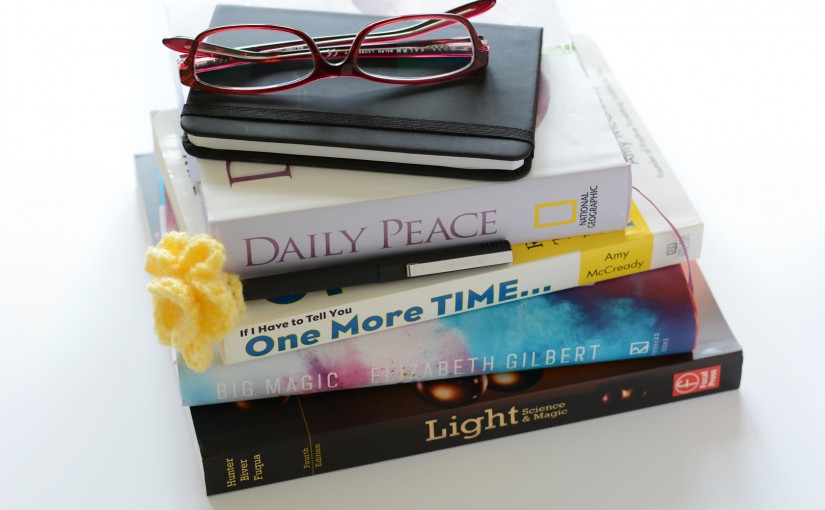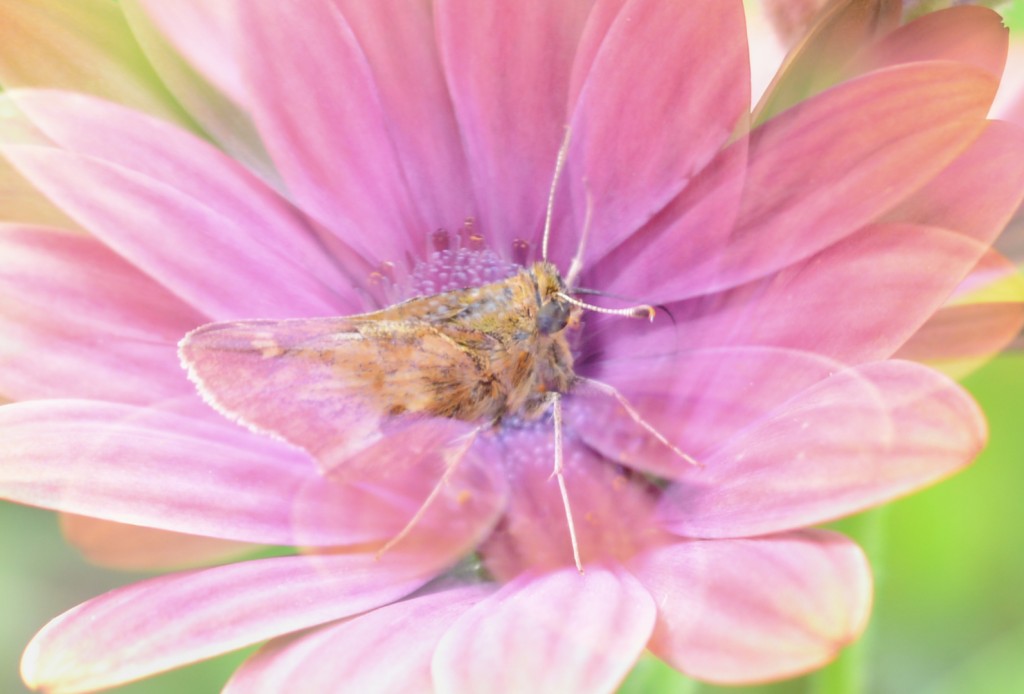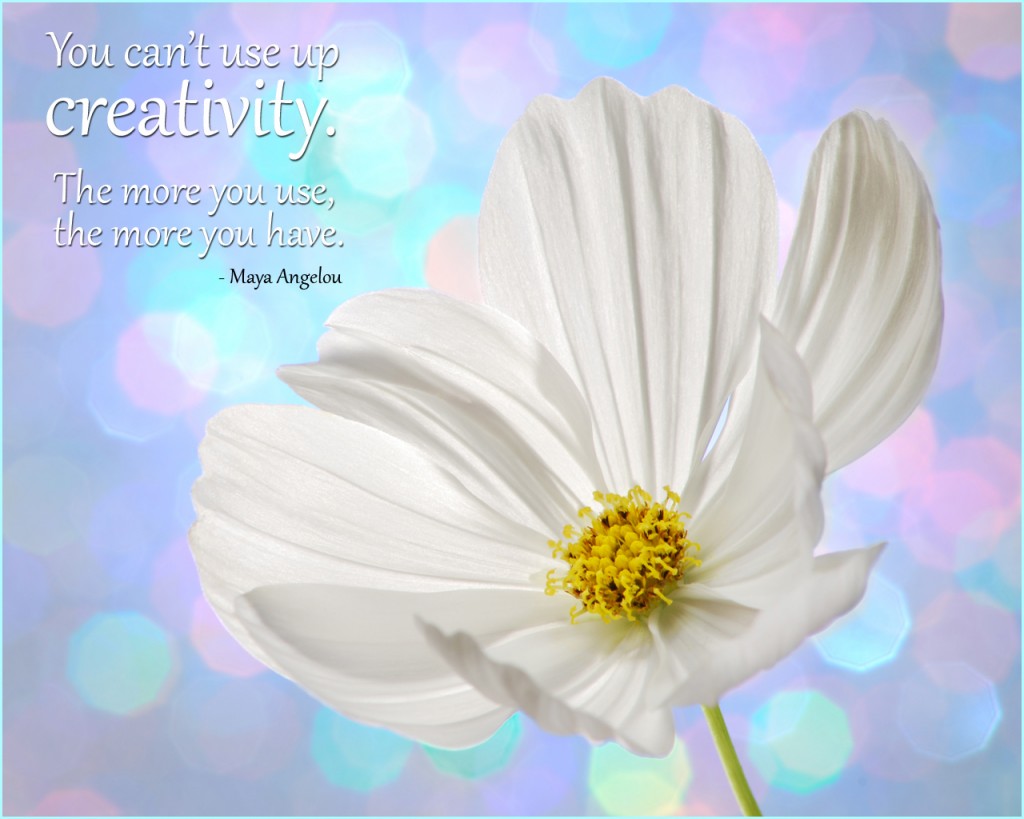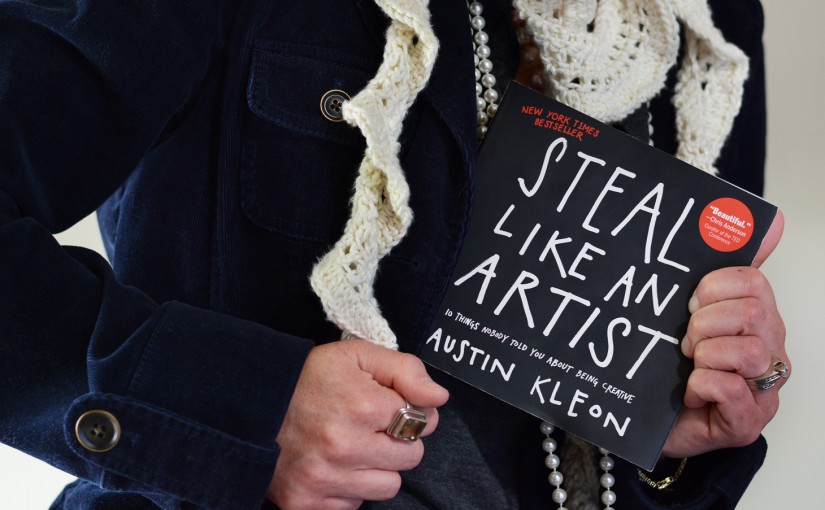Do you do this? I always have a pile of books next to my bed. This is what is there right now. Since I started writing here my intention has been to share more of the books I love with you. However it usually takes me longer than it seems like it should to get through a book. There are just so many responsibilities, muses and interests that take priority.
Oh, and there is a stack. Usually I don’t read through just one before I move on either. Evening reading is often based on my day. Struggling with the kids’ behavior pushes me to pick up the parenting book. If I am trying to work out a plan for a photography project then I choose a technical photography book. A total lack of creative motivation or a surge of inspiration drives me to a book that will push me creatively.
Then there is the fact that if I don’t write about a book as soon as I finish it I feel like I need to re-read it to write about it. Right now, my reaction to finishing a book that I learned a lot from or have been moved by is to just sit, think and soak it in. Then life rushes in, time passes by and after that I feel like I have to immerse myself in that book again to tell you precisely why I felt it was so powerful…
This sounds like a never-ending cycle, doesn’t it? So sharing this with you is helping to reprogram my reaction and enlist you to keep me engaged and motivated to finish these great books. Thank you!
So for now I will share my reactions to these books as I read them and what has earned them a spot (and kept them there) on my nightstand.
Starting at the bottom is Light Science & Magic: An Introduction to Photographic Lighting written by Fil Hunter, Steven Biver and Paul Fuqua and published by Focal Press. I have the Fourth Edition, but there is a newer edition now available.
If you are interested in photography and want to get serious about creating better images this book is an awesome investment of your time and energy. The principles of understanding and crafting light in your photos are fully explained with diagrams and photographs of both successful and unsuccessful examples. Working through this book will dramatically improve your photography. Yes, it is about light, but it is not “light reading” and as I mentioned that best way to fully understand the concepts in the book is to shoot intentionally in attempt to recreate the presented material. It is a highly regarded book that is often used as a text book and is great as a self-study guide. I used this book as I learned how to light glass for photography and developed my DIY home studio method that I talked about in this article for Digital Photo Mentor.
Big Magic: Creative Living Beyond Fear by Elizabeth Gilbert (yes, the author who wrote Eat, Pray, Love)
This book is about the creative process, embracing it, enjoying it and surviving it! When it was released our local library system got about 40 copies! They were anticipating best seller status with their initial order and all copies were all checked out immediately! There was excitement about this book from the start. I got my hands on one of the copies from the library, read a little – and stalled out. I don’t know why, but I think it was my own frame of mind at the time. Even thought I knew there was a waiting list and I would not be able to renew it, I couldn’t push myself to get very far. Luckily for me, I was given a copy as a Christmas gift. When I finally did pick it up again, I couldn’t get enough. There were a few late nights soaking up every word because I just didn’t want to put it down. Now this is one of those books (like this one) that I am so excited and inspired by that as soon as I finish that last page, I flip to the first page and start reading it again!
If I Have to Tell You One More Time…: The Revolutionary Program That Gets Your Kids To Listen Without Nagging, Reminding, or Yelling by Amy McCready
Just the title says a lot, doesn’t it? It sounds divine. Ahh, yes I was daydreaming of it just now. Again. So, the principles in this book are based on the ideas of Alfred Adler (Alderian Psychology) that simply states “Children deserve dignity and respect.” “Three of Adler’s principles developed from this belief will influence all the strategies in this book.” (Read the book to find out the three principles.)
I appreciate this approach because I want my boys to grow up knowing they deserve dignity and respect. If they don’t get it as children, when will be the magic time that they feel they deserve it? I certainly don’t want them demanding it with rebellion. However, even with the best intentions, there are days when we are tired or stressed or overwhelmed and not sure what to do next. This book offers real life examples of how to examine our children’s behavior (as well as our own) and how those behaviors play together. We learn how we can be a positive influence on our children and develop a deep, meaningful, trusting, caring and close relationship with them leading to all the wonderful day-to-day benefits in the title. My bookmark was about ¾ of the way through from the last time it was on the nightstand when I felt that situations and scenarios were warranting that I brush it off and start again. While I’m reading now I found this quote on page 56 that explains my feelings as I instinctively reach for this (and other parenting books) in the first place. It is something I’ve felt, but hadn’t tried to communicate. “…as responsible parents we need to continually strive to improve on our own parenting style.” Yes! Thank you, Amy McCready. By the way, that sentence starts with “Of course, we all make mistakes, but…
Daily Peace: 365 Days of Renewal by National Geographic
This little hardcover book is a great gift for a friend or yourself. It features beautiful photography and thoughtful quotes each day to inspire your own “Daily Peace.” The book is published by National Geographic so you know it is top quality. It is difficult to choose just one quote from this book so I looked at meaningful dates for me and I found this one to be the most powerful. I will leave you with this quote since it is a perfect thought for when you are snuggled in bed, with your books back on the nightstand and the light off. “How noble and good everyone could be if, every evening before falling asleep, they were to recall to their minds the events of the whole day and consider exactly what has been good and bad. Then without realizing it, you try to improve yourself at the start of each new day.” –Anne Frank




